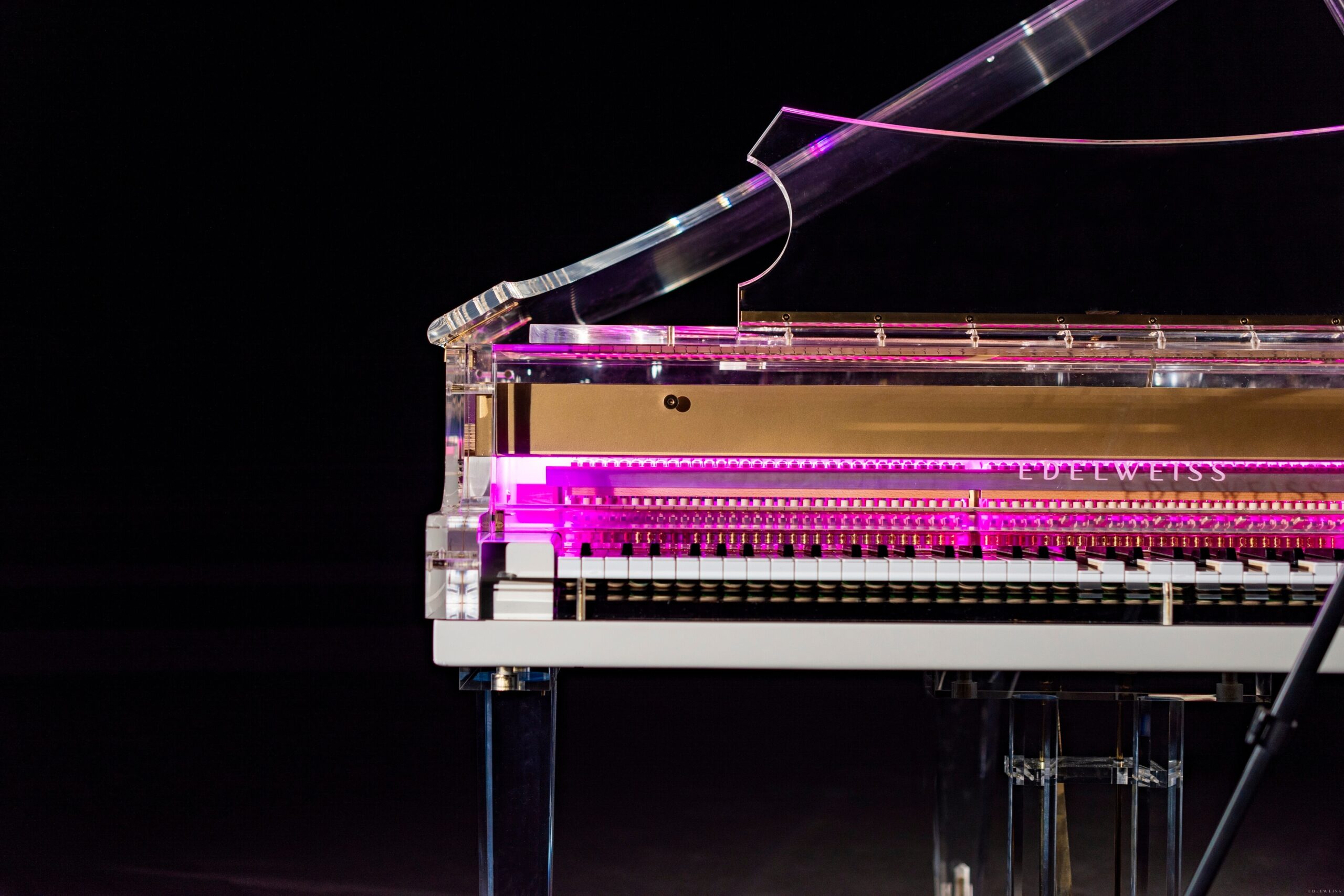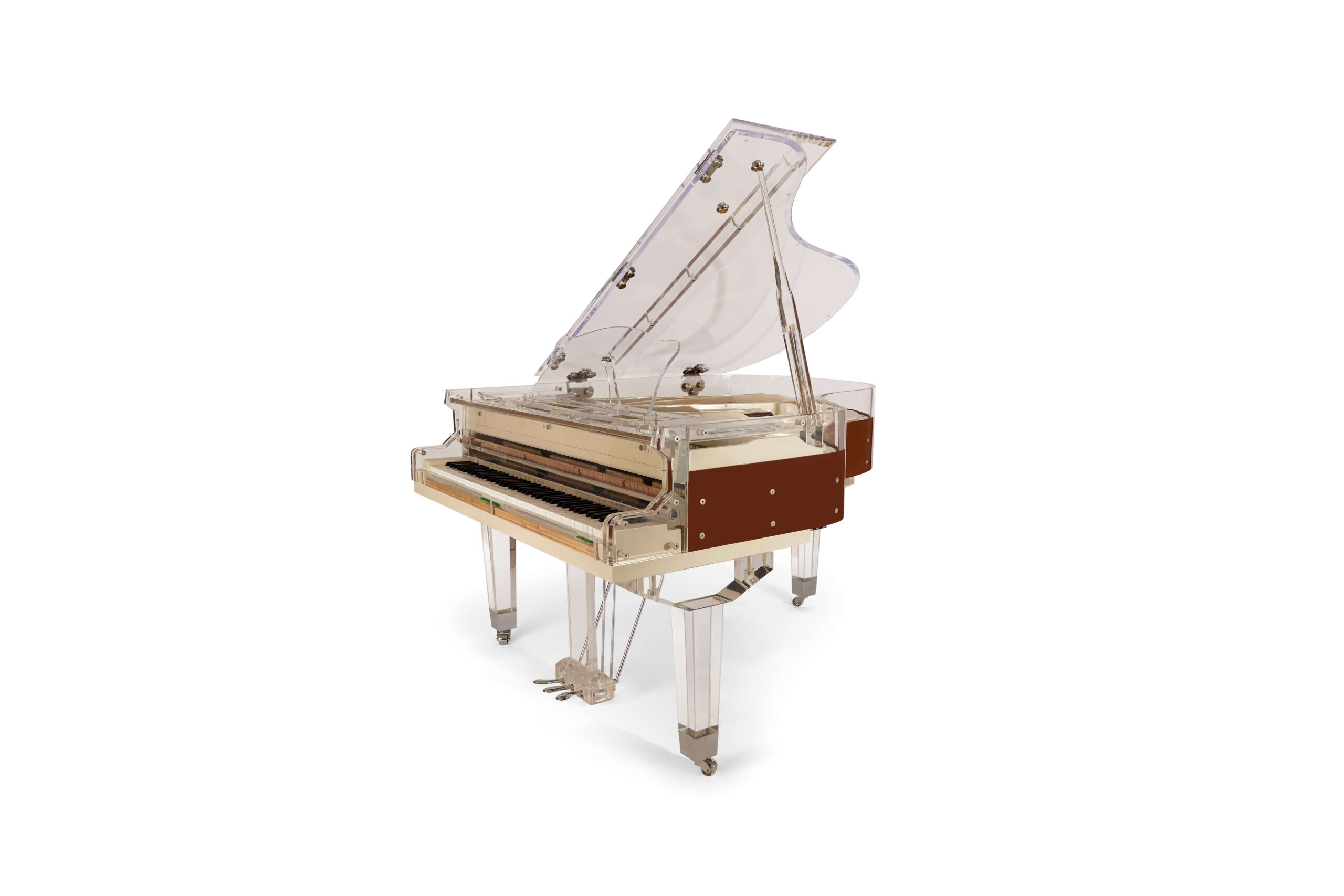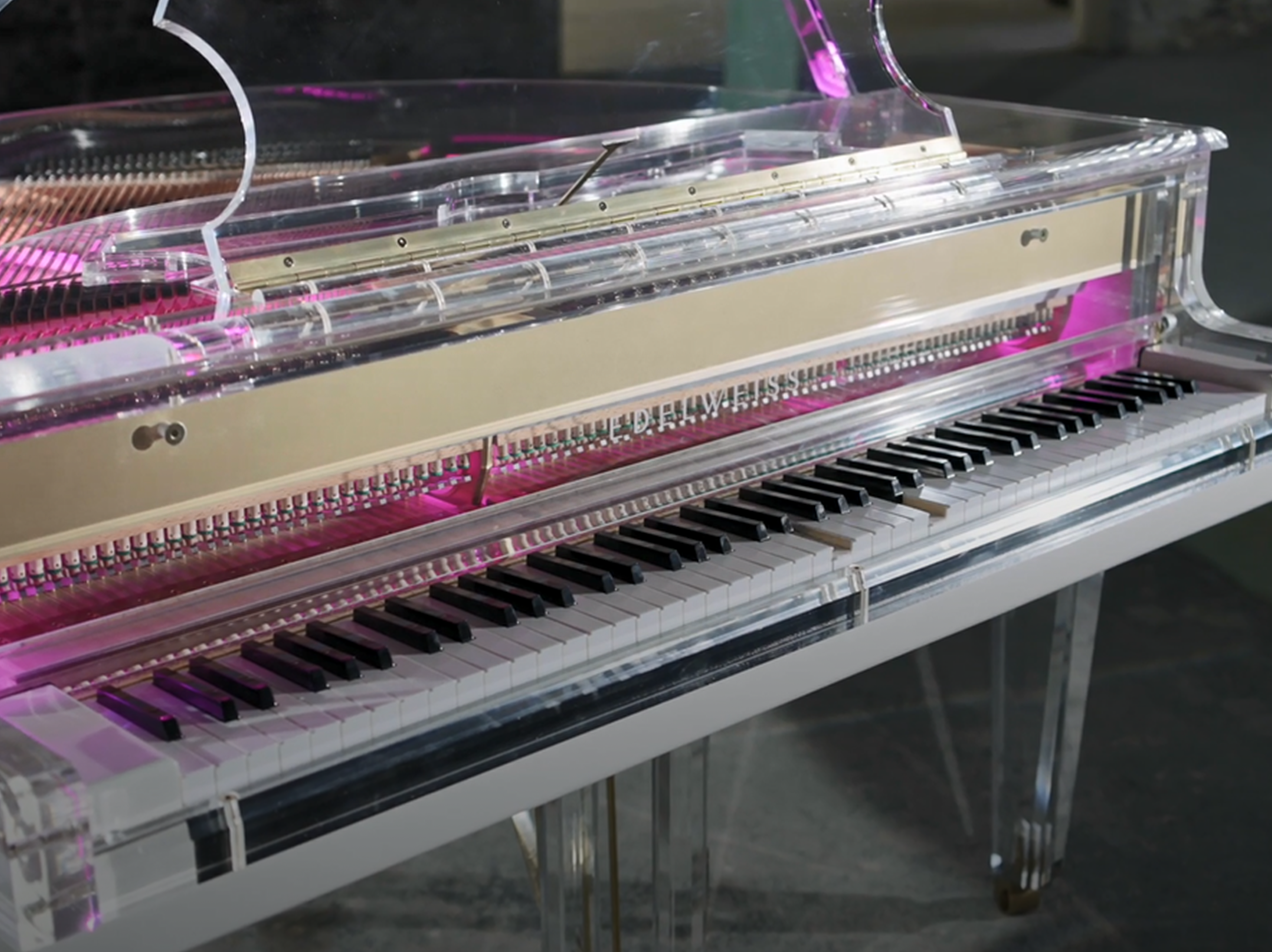Discover the Complete Guide to Transparent Pianos: History, Design, and Care
Have you ever imagined a piano that not only sounds exquisite but also captivates the eye with its unique transparency? Transparent pianos, also known as acrylic,crystal or see through pianos, have been redefining the aesthetics of musical instruments. These stunning creations offer an unobstructed view of the intricate mechanics inside, adding a touch of drama and elegance to any performance or space.
Imagine attending a concert where the grand piano doesn’t just play music but also becomes a visual centerpiece. Transparent pianos have been around since the 1970s, originally designed to enhance audience viewing experiences during orchestral performances. Today, they continue to mesmerize audiences and are sought after for their modern, sleek design.
This guide will walk you through everything you need to know about transparent pianos, from their history to their unique features. Whether you’re a musician, a collector, or simply an enthusiast, you’ll discover why these pianos are a true marvel in the world of music.
Key Takeaways
- Transparent pianos, also known as acrylic or crystal pianos, offer a blend of traditional craftsmanship with modern aesthetics, showcasing their inner mechanics through clear materials like acrylic or glass.
- These pianos not only provide high sound quality similar to traditional grand pianos but also serve as visual spectacles, making them popular choices for performance venues and luxury spaces.
- Key manufacturers like Edelweiss Pianos, Lucid, and Blüthner produce transparent pianos that combine sound excellence with customizable elements such as frame color and internal lighting.
- The use of durable acrylic ensures the aesthetic appeal of transparent pianos without compromising on sound performance, making them a testament to innovative musical instrument design.
- Proper maintenance, including controlled environmental conditions and regular cleaning, is crucial to preserving the quality and appearance of transparent pianos.
Overview of Transparent Pianos
Definition and Design
Transparent pianos use see-through materials like acrylic, making their internal components visible. This design marries traditional craftsmanship with modern aesthetics. You experience not just the music, but a visual spectacle as well.
Examples of Transparent Pianos
- Edelweiss Pianos Transparent-S132 The Edelweiss S132 is the world’s smallest transparent acoustic grand piano, this piano displays its intricate inner mechanics while maintaining Edelweiss Pianos renowned sound quality. Its visually striking appearance combines classic sound with modern elegance.
- Lucid Pianos: These pianos feature acrylic construction, combining luxury with contemporary style. Known for refined elegance, they offer a unique visual addition to any space.
Materials
The main material in transparent piano construction is acrylic, chosen for its clarity and durability. It’s a reliable option that ensures both functionality and aesthetic appeal.
Understanding these aspects helps you appreciate transparent pianos’ blend of artistry and innovation.
Design and Aesthetics

Transparent pianos captivate with a fusion of modern aesthetics and traditional musical craftsmanship. Their see-through design creates a visual spectacle that enhances performances.
Materials and Construction
Acrylic is the primary material used in these pianos due to its exceptional clarity and durability. You find this material in models like the Blüthner Lucid Pianos and the Edelweiss Transparent Models. Acrylic art cases combine transparent and opaque elements, offering a range of customization from color schemes to internal lighting. High-quality craftsmanship ensures that the performance characteristics of traditional pianos are preserved while providing a contemporary visual flair.
Day and Night Appeal
Transparent pianos offer a dual aesthetic appeal, captivating audiences both day and night. During the day, the acrylic bodies allow natural light to illuminate their inner mechanics. At night, optional internal lighting systems can transform these instruments into dazzling centerpieces. This versatility enhances both their visual and musical experiences whenever they are played.
Sound and Performance

Transparent pianos, constructed with precision, deliver high sound quality comparable to traditional grand pianos and advanced design ensures no compromise on musical richness. When you’re considering transparent pianos, it’s key to understand how materials and construction techniques impact sound and performance.
Materials and Construction
High-quality materials form the backbone of transparent pianos, similar to those used in classic counterparts. Spruce soundboards, like those in Lumiere models, provide resonant sound. These pianos often incorporate German components, including Abel hammers and Rosslau strings, to guarantee exceptional sound and action quality.
Acrylic Components
Acrylic parts, integral to transparent pianos’ distinctive look, don’t diminish sound quality or performance. British Made Acrylic – as used in the Edelweiss Transparent S132 – and American-made acrylic, as used in Euro Pianos Naples’ Aire™, maintains sonic integrity. The transparent body, lid, and lyre offer aesthetics without affecting the musical output.
Transparent pianos stand as a testament to innovation and craftsmanship, merging modern materials with traditional acoustic excellence. When seeking a piano that combines beauty with sound performance, transparent models meet and often exceed expectations.
Market Trends and Innovations
The piano market sees growth with advancements in technology and evolving consumer preferences driving demand. Transparent pianos, also called acrylic or crystal pianos, particularly appeal to those seeking modern and visually stunning instruments.
Transparent Piano Demand
Transparent pianos cater to musicians and enthusiasts looking for unique aesthetics and innovation. Known for their see-through designs, these pianos showcase intricate inner mechanics, making them a popular choice for performance venues and luxury spaces. The versatility offered by acrylic materials enhances their appeal with customizable color schemes and optional internal lighting.
Key Manufacturers
Edelweiss Pianos and Lucid Pianos: Two key manufacturers of transparent pianos are Edelweiss Pianos and Lucid Pianos. They both produce transparent pianos featuring customizable elements such as frame colors, soundboard veneers, and LED illumination. These features combine traditional piano craftsmanship with modern aesthetics. The Edelweiss Transparent S132 designs represent luxury and innovation, offering materials like tempered glass for visibility and sound components from renowned manufacturers.
These trends highlight a shift towards customizable, innovative pianos that fuse artistry with functionality, meeting the needs of a style-conscious audience.
Maintenance and Care Tips

Environmental Conditions
To maximise caring for your transparent piano ensure consistent temperature and humidity levels for your transparent piano. Ideal conditions include a temperature range of 65-72°F (18-22°C) and humidity levels between 40-50%. Inconsistent environments can cause materials to expand or contract, leading to potential damage or tuning issues.
Keep your piano away from direct sunlight, which can discolor or fade the finish. Use curtains or blinds to shield it from UV rays. Placing it in a well-ventilated space helps prevent moisture build-up, protecting its internal components.
Cleaning and Maintenance
Dust your transparent piano regularly using a soft, lint-free cloth or feather duster. Avoid aerosol sprays or furniture polish, which might damage the piano’s finish or leave unwanted residue. Use a slightly damp cloth for stubborn spots and immediately dry them to avoid any moisture damage.
Check and tune the piano regularly, at least twice a year, to maintain sound quality and ensure optimal performance. If possible, schedule professional tunings, as they provide the expertise required for complex adjustments specific to transparent pianos.
Conclusion
Transparent pianos beautifully blend innovation and tradition offering a visual and auditory spectacle that captivates musicians and audiences alike. With their modern design and high-quality sound these instruments stand as a testament to the possibilities of contemporary craftsmanship.
Whether you’re a musician seeking a unique performance piece or a collector drawn to their aesthetic appeal transparent pianos provide a stunning combination of form and function. By understanding their construction and maintenance you can appreciate the artistry and innovation they represent ensuring they remain a cherished part of your musical journey.
Frequently Asked Questions
What are transparent pianos made of?
Transparent pianos are primarily made of acrylic. Acrylic is favored due to its clarity and durability, allowing the piano to exhibit a see-through design without compromising functionality or sound quality.
Do transparent pianos affect sound quality?
No, transparent pianos do not compromise sound quality. High-quality construction with components like spruce soundboards and German-made parts ensures they deliver sound comparable to traditional grand pianos, maintaining both aesthetic appeal and performance.
When did transparent pianos first become popular?
Transparent pianos gained prominence in the 1970s. They were designed to enhance audience experiences by showcasing their internal mechanisms, and their modern design has sustained their popularity over the years.
Can transparent pianos be customized?
Yes, transparent pianos offer customization options in color schemes and internal lighting. The versatility of acrylic allows them to blend modern aesthetics with traditional craftsmanship, providing unique and visually stunning instruments.
Are transparent pianos suitable for professional performances?
Yes, transparent pianos are suitable for professional performances. They are crafted with high-quality materials ensuring excellent sound performance akin to conventional pianos, making them popular in performance venues and luxury spaces.
What is a notable example of a transparent piano?
The Edelweiss Transparent S132 Baby Grand Piano is a notable example, recognized for its intricate inner mechanics and sound quality. It represents the fusion of luxury, modern aesthetics, and traditional craftsmanship that transparent pianos embody.
How should I maintain a transparent piano?
To maintain a transparent piano, keep it in consistent environmental conditions by regulating temperature and humidity. Avoid direct sunlight, dust with a soft cloth regularly, and have it professionally tuned at least twice a year.
